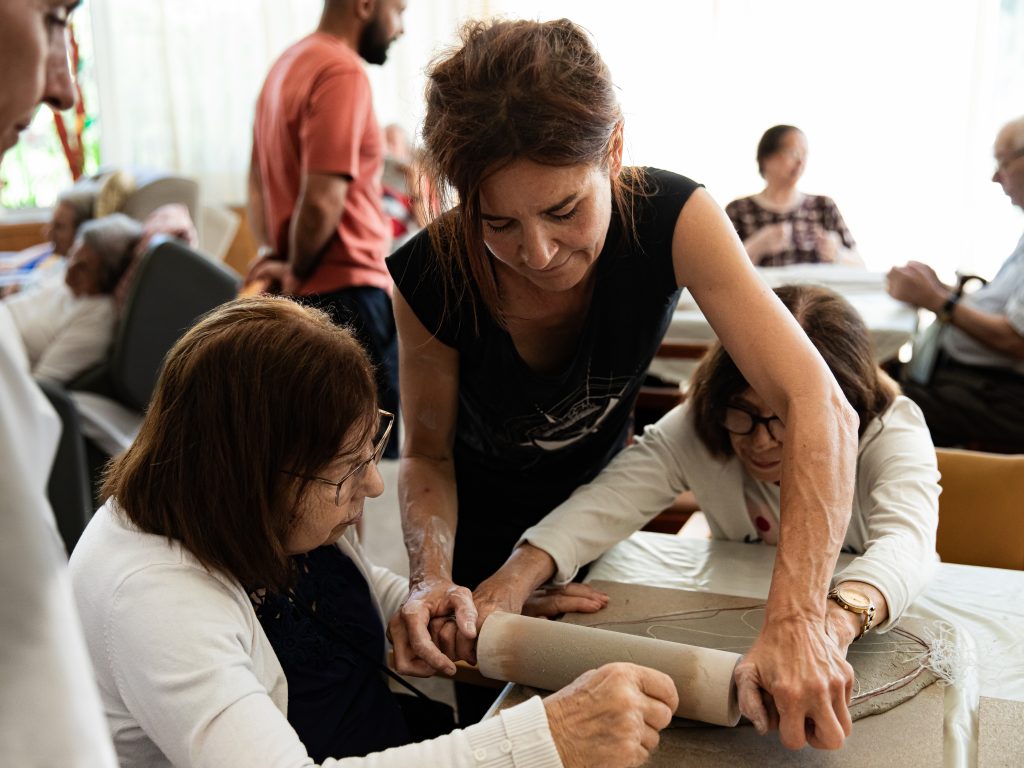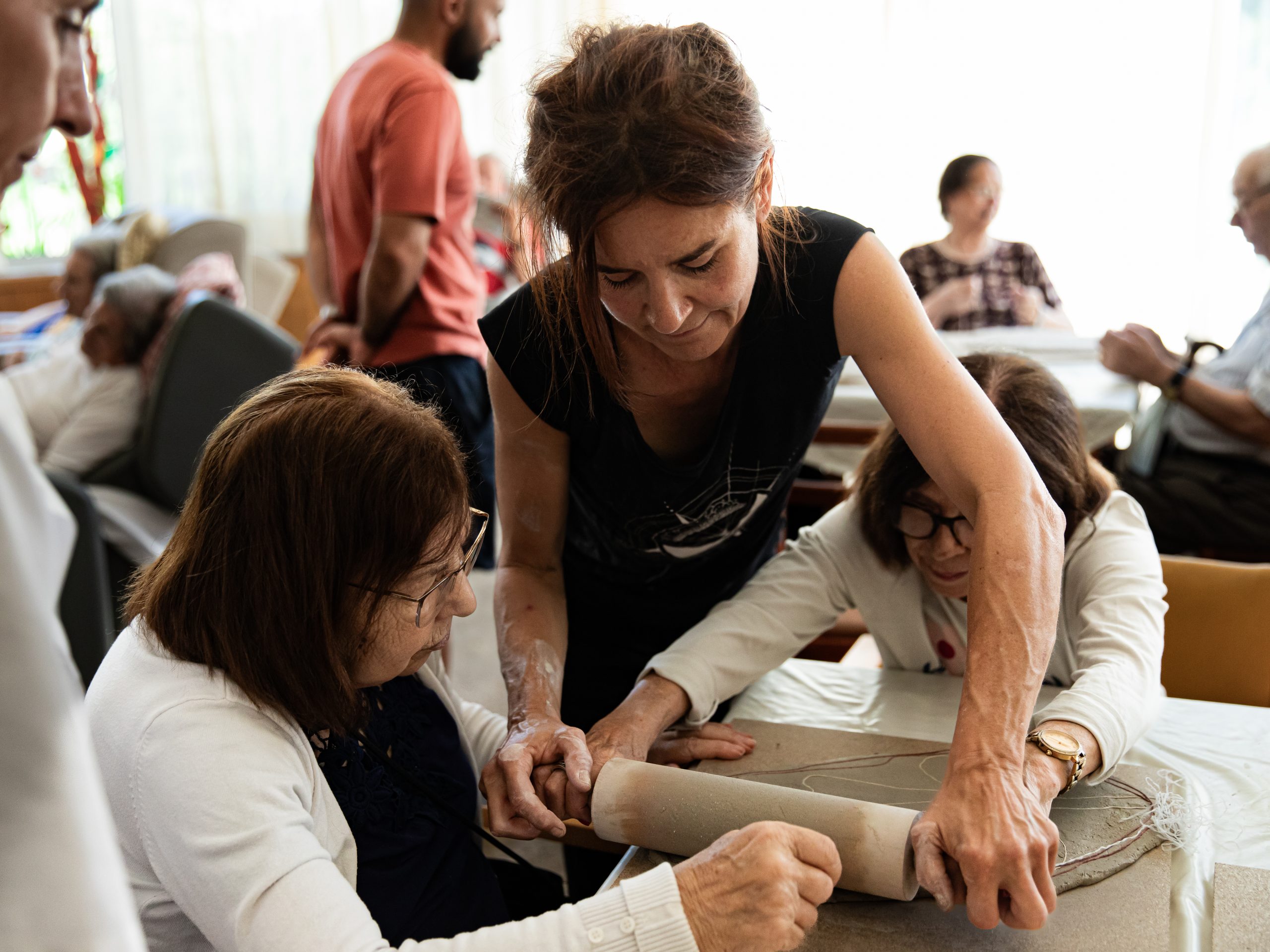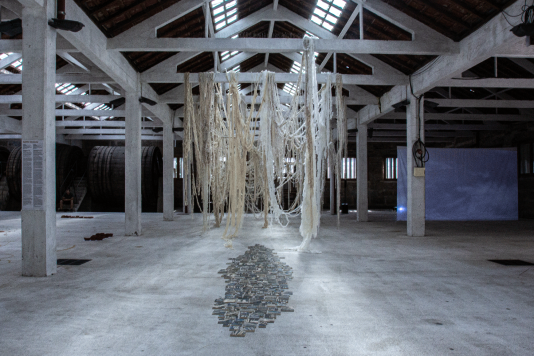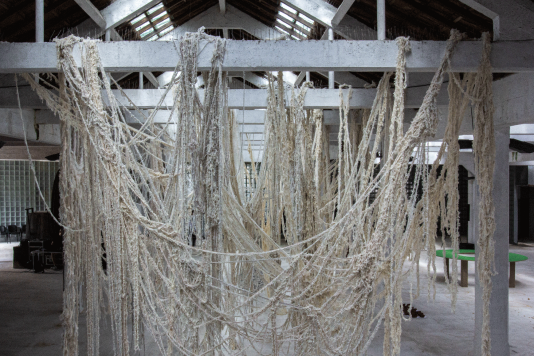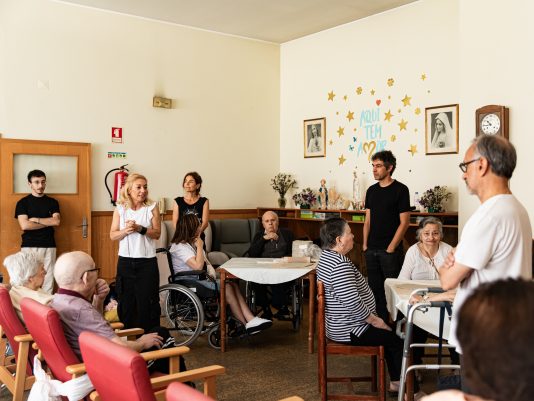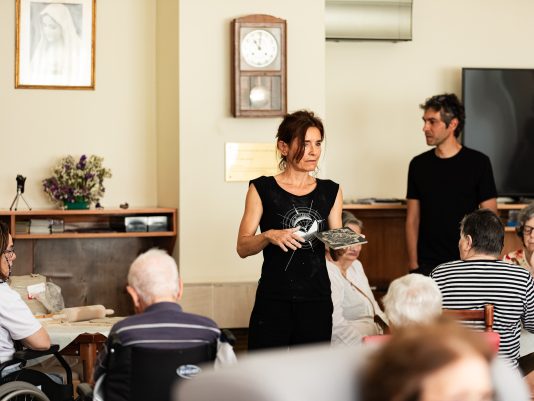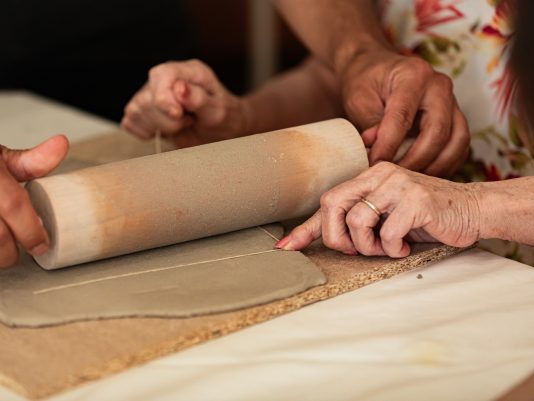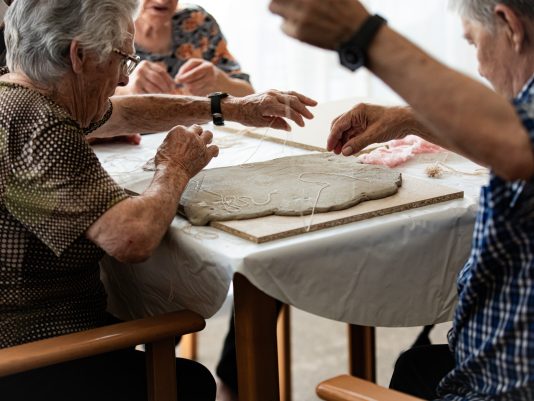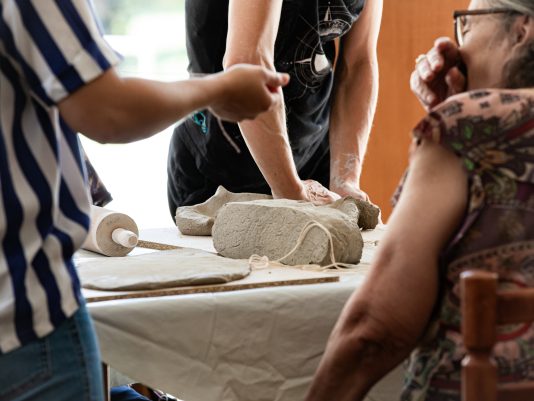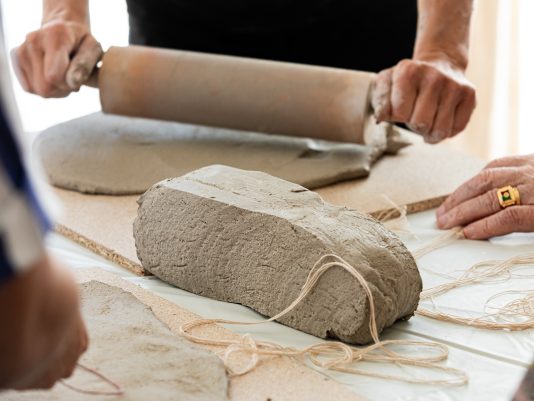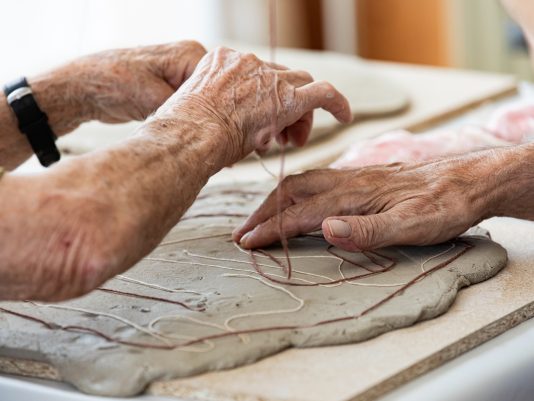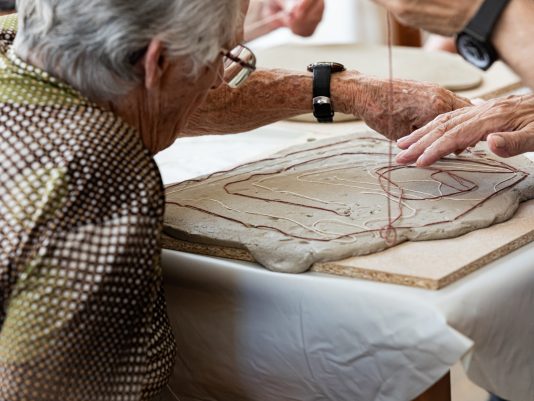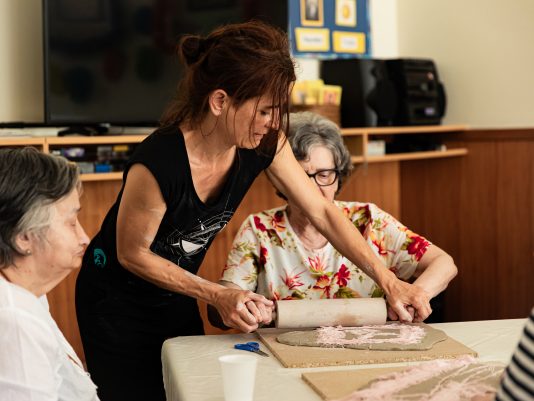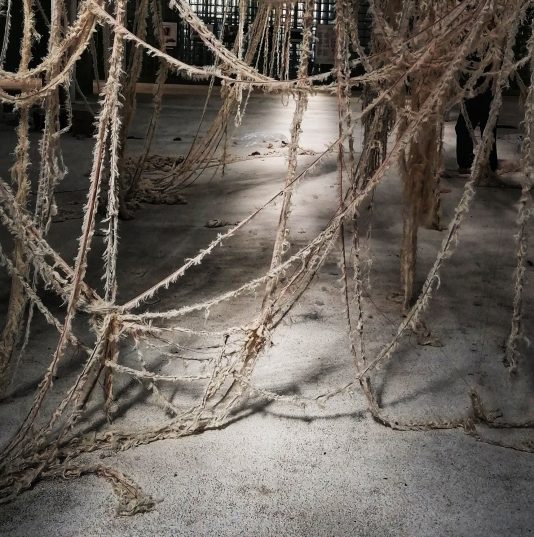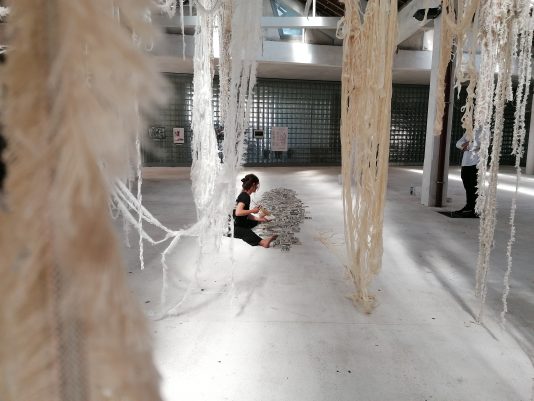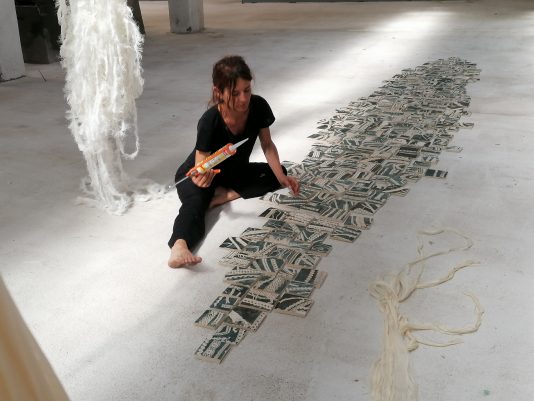Artist: Judith Klemenc
Curator: Cláudia Melo
Partner: Ideias Emergentes-Portugal
Judith Klemenc, based in Austria, was one of the artists selected for the residency in Guimarães, Portugal, as part of the Magic Carpets project through Ideias Emergentes. During the month of July, the artist developed her work in collaboration with the communities of the elderly care homes of Santa Casa da Misericórdia de Guimarães. To familiarize herself with the culture of the territory where she was to work, we organized a series of visits to museums, pottery studios, and local textile factories.
The curatorial proposal was rooted in an exploration of the unique characteristics of Guimarães’ context and territory, focusing on textiles and pottery/ceramics, as well as the relational dynamics between the artists and their collaborative practices with the communities of the elderly care homes of Santa Casa da Misericórdia de Guimarães.
(Dis)similarities emerged in everyday practices, in the recurring use of textiles and ceramics, in legends, traditions, hopes for prosperity, and the future. Efforts were made to re-establish a physical or immaterial sense of place through the recognition of locations, primarily through the testimonies and involvement of local communities, as well as relationships with individuals who shared stories, experiences, and personal knowledge.
The relationship between the textile culture inherent in Guimarães and its historical connection to pottery practice for everyday household objects was considered. Commonalities and disparities were identified and explored. What do textiles and pottery represent in the homes and lives they were once a part of? These objects carry memories and actions—desires, dreams, and wills.
About “Bodyskin: Touching/Being Touched by Threads and Clay of Life”:
“THE SKIN WAS IMITATING THE SKY AS BEST IT COULD.”
In this artistic residency, Judith Klemenc’s process revolves around a system of relationships between the body and its surroundings. Body-matter, body-space, body-place, body-body, body-skin, body-gesture, body-perception, body-knowledge, body-image—in short, body-relationship. The entire work is performance-based. Flesh and skin are presented as metaphors. The skin, which encompasses a set of tissues that compose the human skin and its related structures, plays a fundamental role in human survival, acting both as a barrier and a receptor simultaneously. It is responsible for sensory functions, including touch, pressure, cold, heat, and pain.
The proposal involved bridging the gap between clay firing and textile sewing, mediated through the body-skin (both her own and that of others). Everything becomes materialized in this bodily engagement, combined with the memories of the community and a region that has been shaped by textiles and, in the past, pottery.
Even before arriving in Guimarães, the artist was captivated by the readings and stories related to the textile factories and the historical trauma associated with textiles. Walking through the city streets, the threads, movements, and sounds of the factory looms left indelible marks that manifested in the conceptualization and materialization of her work.
Clay and textiles are materials with organic qualities, sharing common aspects. Klemenc has incorporated them into her practice for some time, with three essential conditions that matter to her regarding these materials: they are natural materials, extracted from the earth, establishing a direct connection with nature; highly malleable, readily absorbing the marks we wish to impress upon them, giving them an enormous tactile quality capable of presenting themselves as a second skin; and finally, they carry within them history and tradition, making them materials imbued with cultural significance.
“BodySkin: Touching/Being Touched by Threads and Clay of Life” invokes the textile threads left over from industrial production—cut edges, remnants of existence, and memories of perfectly woven pieces. She considers them memory threads capable of generating new spaces guided by her body. A dance pair. The entire act is performative from the beginning and arises from memories, creating new ones. They are glimpses of the past that now materialize and offer the possibility of a future.
The artist’s collaborative process with the community of Lares da Santa Casa da Misericórdia is revelatory. Stories and memories are shared, and senses are heightened. Judith proposed the contact of materials always in connection with the body. Fresh clay acts as a receptor for memory threads, impressed through gestures. These are complementary processes—identity-related, of annihilation, and consequent transformation into life. What remains are memories of threads embedded in clay, undergoing a process of negative/positive transformation through firing and engobe (slip). The resulting tile pieces will create new paths where the lives and stories of each individual blend. One’s drawing is only completed by the other’s drawing. Thus, this new space created by so many elements is presented to us, and we are compelled to belong to it.
Finally, in an unrepeatable moment, Judith’s expanded body, both affective and emotional, social and spiritual, bursts forth once again in this created place, and her shadowy skin engages in a dialogue with the moving image, with sound, and with the place. The video performance, which occurred during the opening, adds the sky and the skin of this territory. This sky has the potential to intensify the human experience and our ability to perceive the world in a deeper and more profound way. Only here does the performance become complete.
As in the poem by Nava, “The skin was imitating the sky as best it could.” [1]
Curatorial text by Cláudia Melo
July 2023
[1] Luis Miguel Nava: “The Sky Under the Entrails”
Genre: Poetry
Publisher: Assírio & Alvim
2020
